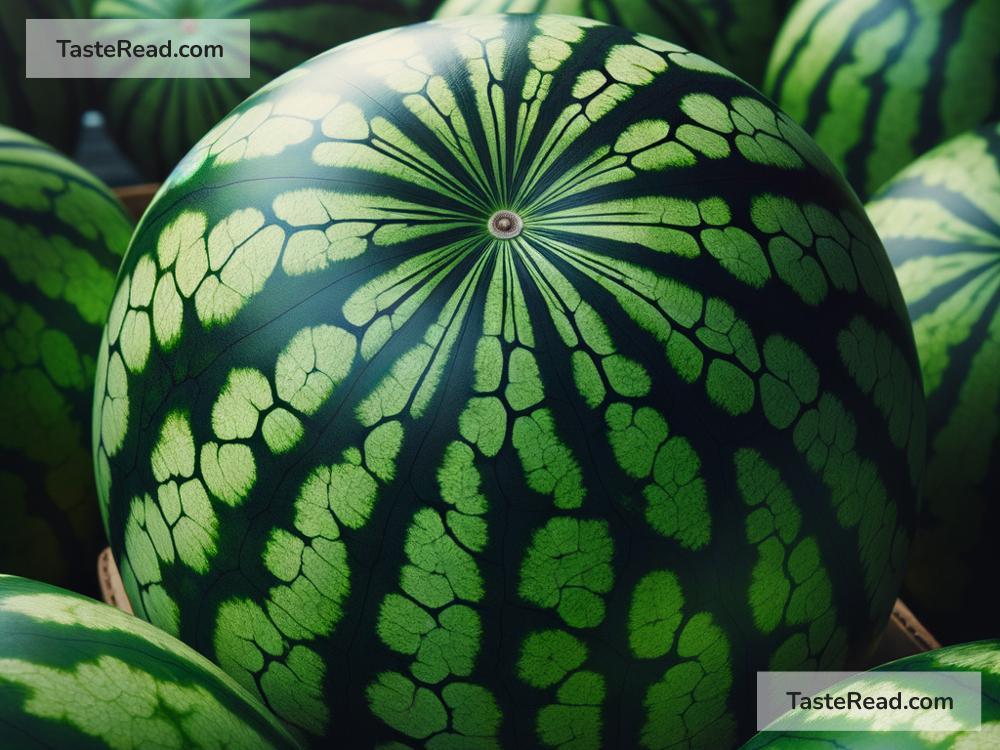The Mystery Behind the Perfect Watermelon Stripe Patterns
Have you ever picked up a watermelon and marveled at its unique stripe patterns? Those beautiful green lines crisscrossing the fruit seem almost too perfect to be natural. Whether they’re thin and delicate or bold and eye-catching, watermelon stripes are a sight to behold. While we often take these patterns for granted, they actually hold a fascinating mystery. Why do watermelons grow with stripes? And what do these stripes mean? Let’s dive into the sweet and scientific world of watermelons and uncover the secrets behind their perfect patterns.
Stripes: More Than Just Decoration
Watermelon stripes aren’t just there to make the fruit look pretty (though they do an excellent job of that). These stripes serve a greater purpose in nature—the plant’s natural growth and survival. In simple terms, the patterns on a watermelon can act as a visual clue about what’s happening inside the fruit. Farmers and scientists have studied watermelons for years, trying to figure out what stripes reveal about the maturity, health, and sweetness of the fruit.
Why Do Watermelons Even Have Stripes?
To understand watermelon stripes, we have to take a closer look at their biology. Watermelons grow as part of a large vine plant that creates thick-skinned fruits. As the fruit develops, its outer layer—the rind—forms protective pigments. These pigments come in different shades of green, depending on the variety of watermelon. Stripes, which are lighter or darker green, occur when there’s variation in the distribution of pigments on the rind.
But why does the pigment vary? The answer lies in the complex interaction between genes, sunlight, and water absorption as the fruit grows. Watermelons are natural works of art, shaped by environmental factors and genetics. Some scientists believe that the stripes might even serve practical purposes, like helping the watermelon make better use of sunlight or temperature regulation. However, this theory hasn’t been confirmed, so the stripes remain a curious feature of the fruit.
Different Types of Stripe Patterns
If you’ve bought watermelons from different places or varieties, you’ve probably noticed that they don’t all look the same. Some watermelons have uniform dark-green rinds and no visible stripes, while others have bold lines that seem to stretch diagonally across the entire fruit. Let’s break down a few common stripe patterns and what you might expect from each:
-
Crimson Sweet Watermelons: These are among the most popular watermelons, often recognized for their light-green base color and thick, dark stripes. The bold contrast not only makes them look tempting but also hints at their juicy, sweet red flesh inside.
-
Sugar Baby Watermelons: These are smaller watermelons with very faint or no stripes at all. Instead, their rinds are usually solid dark green. Despite the lack of eye-catching patterns, Sugar Baby varieties are just as delicious.
-
Moon and Stars Watermelons: This unique variety has a dark green rind with bright yellow spots mixed in—it’s as if the fruit has its own little galaxy printed on it! While stripes are less prominent in this type, the natural designs make it look magical.
-
Stripeless Watermelons: Some modern hybrids, designed for efficiency and uniformity, completely lack stripes. These watermelons are bred for commercial purposes but aren’t as visually exciting.
What Do Stripes Say About Ripeness?
One of the most intriguing mysteries surrounding watermelon stripes is their connection to ripeness. Can stripes actually tell you when a watermelon is ready to eat? Farmers and watermelon experts believe they can.
Stripes often become clearer or more defined as the watermelon matures. In many cases, the lighter green parts of the stripes start to fade slightly, and the darker green portions become richer. But beware—stripe patterns alone aren’t a foolproof way to tell ripeness. Farmers often combine stripe observations with other methods, like checking the fruit’s underside (called the ground spot) for a creamy yellow color or gently knocking on the rind to hear a deep, hollow sound.
So, while stripes may give clues about the fruit’s growth, it’s best to use other signs to pick the perfect watermelon.
Nature’s Mystery or Design?
With all the information we’ve learned, one big question remains: Why do watermelon stripes look so perfect? Is nature just that good at creating beautiful designs, or is there something more to it?
While science can explain much of how stripes are formed, some aspects of their perfect symmetry remain mysterious. Even with advances in plant genetics, we still don’t fully understand why certain watermelons develop clear striped patterns while others don’t. Perhaps it’s a reminder that nature has its own creative process, producing fruits that are not only delicious but also visually stunning.
Conclusion: A Fruit to Celebrate
The humble watermelon is more than just a refreshing snack on a hot day; it’s a work of art that carries the mysteries of nature in every stripe. Whether they’re bold and pronounced or faint and subtle, watermelon stripes represent a fascinating blend of biology, environmental factors, and genetic design.
So, the next time you pick up a watermelon, take a moment to appreciate its perfect patterns. Behind those pretty stripes lies the story of a fruit shaped by nature’s hand—a sweet mystery to enjoy, both inside and out! Enjoy your watermelon, and may your stripes always lead to sweetness.


